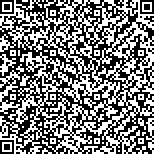钟伟兴,谌祖江,王宁,等.膏摩疗法对骨骼肌急性钝挫伤模型大鼠炎症及氧化应激和血管生成的影响[J].中华物理医学与康复杂志,2024,46(5):401-406
扫码阅读全文

|
| 膏摩疗法对骨骼肌急性钝挫伤模型大鼠炎症及氧化应激和血管生成的影响 |
|
| |
| DOI:10.3760/cma.j.issn.0254-1424.2024.05.003 |
| 中文关键词: 膏摩疗法 骨骼肌钝挫伤 炎症 氧化应激 血管再生 |
| 英文关键词: Ointments Massage Skeletal muscles Muscle trauma Inflammation Oxidative stress Angiogenesis |
| 基金项目:李义凯广东省名中医传承工作室建设项目(粤中医办函2023_108);广东省教育厅广东省普通高校重点领域专项(2022ZDZX3004);深圳市“医疗卫生三名工程”项目(SZZYSM202108013);广东省基础与应用基础研究基金(2024A1515011263) |
|
| 摘要点击次数: 2894 |
| 全文下载次数: 3405 |
| 中文摘要: |
| 目的 观察膏摩疗法对大鼠骨骼肌急性钝挫伤修复过程中炎症、氧化应激和血管生成的影响,探讨膏摩疗法治疗骨骼肌损伤的作用机制。 方法 将42只成年雄性SD大鼠随机分为对照组(6只)、膏摩组(18只)、模型组(18只),膏摩组和模型组均采用自制打击器建立腓肠肌急性钝挫伤模型,膏摩组和模型组按造模后时间分为第1天、第3天和第7天三个亚组,每亚组6只大鼠。膏摩组于造模2 h后开始膏摩治疗,由专人在损伤局部涂抹消炎止痛膏,并运用食指摩法,推拿手法均匀和缓,每次5 min,每日2次(间隔12 h)。模型组和对照组不予处理。分别于造模后第1、3、7天时间点取材,对各组大鼠进行腹主动脉采血后取损伤侧腓肠肌,检测和分析苏木精-伊红(HE)染色、免疫荧光(CD34)染色,以及血清超氧化物歧化酶(SOD)和丙二醛(MDA)含量。 结果 HE染色显示,各时间点模型组腓肠肌肌纤维均较对照组肿胀变形,崩塌溶解,大量炎症细胞浸润;各时间点膏摩组较模型组恢复更佳,新生成肌细胞较多,炎症浸润减轻,形态更趋正常。免疫荧光染色显示,模型组与膏摩组各时间点较对照组的红色荧光(CD34)更较明显;与模型组比较,膏摩组各取材时间点则更明显。模型组和膏摩组各时间点的SOD和MDA含量均较对照组明显升高(P<0.05或P<0.01),其中第1天和第3天膏摩组的SOD含量较同时间点模型组明显升高(Z1=-2.882,P1=0.004;Z3=-2.882,P3=0.004),第7天膏摩组SOD含量与模型组比较,差异无统计学意义(Z7=-1.992,P7=0.55);而膏摩组各时间点的MDA含量均低于同时间点模型组(Z1=-2.887,P1=0.004;Z3=-2.089,P3=0.037;Z7=-2.722,P7=0.006)。 结论 膏摩疗法可有效减轻骨骼肌损伤后的局部炎症反应,减少氧化应激损害,加快局部血管生成,进而加速受损组织的修复。 |
| 英文摘要: |
| Objective To observe the effects of ointment and massage on inflammation, oxidative stress and angiogenesis after skeletal muscle trauma, and to explore their mechanisms. Methods Forty-two adult male Sprague-Dawley rats were randomly divided into a blank group (n=6), an ointment and massage (O&M) group (n=18) and a model group (n=18). The blunt contusion model of gastrocnemius malformation was established in both the O&M and model groups using self-made percussion instruments. Two hours after successful modeling, the anti-inflammatory pain-relieving cream was applied to the injured area, and massaged evenly and gently for 5 minutes. That was repeated with an interval of 12 hours. No treatment was given to the model and blank groups. On the 1st, 3rd and 7th days after modeling, injured gastrocnemius muscles were resected after collecting abdominal blood. Hematoxylin-eosin (HE) staining and immunofluorescent (CD34) staining were applied, and serum superoxide dismutase (SOD) and malondialdehyde (MDA) contents were detected. Results HE staining showed that at each time point the gastrocnemius muscle fibers of the model group were significantly more swollen and deformed, collapsed and dissolved than those of the blank group, with a large number of inflamed cells. The O&M group had better recovery, with more newly-generated muscle cells, less inflammatory infiltration and more normal cell shapes than the model group. Fluorescence was stronger in the O&M and model groups than in the blank group at each time point, with that of the O&M group significantly stronger than in the model group. The average SOD and MDA levels in the model and O&M groups were significantly higher than in the blank group, and on the 1st and 3rd days the O&M group′s average SOD level was significantly higher than the model group′s average, though by the 7th day there was no significant difference. The average MDA content of the O&M group was significantly lower than the model group′s average at each time point. Conclusion Ointment and massage can effectively reduce the local inflammatory response and oxidative stress after a skeletal muscle injury. They can accelerate local angiogenesis, promoting the repair of damaged tissues. |
|
查看全文
查看/发表评论 下载PDF阅读器 |
| 关闭 |
|
|
|